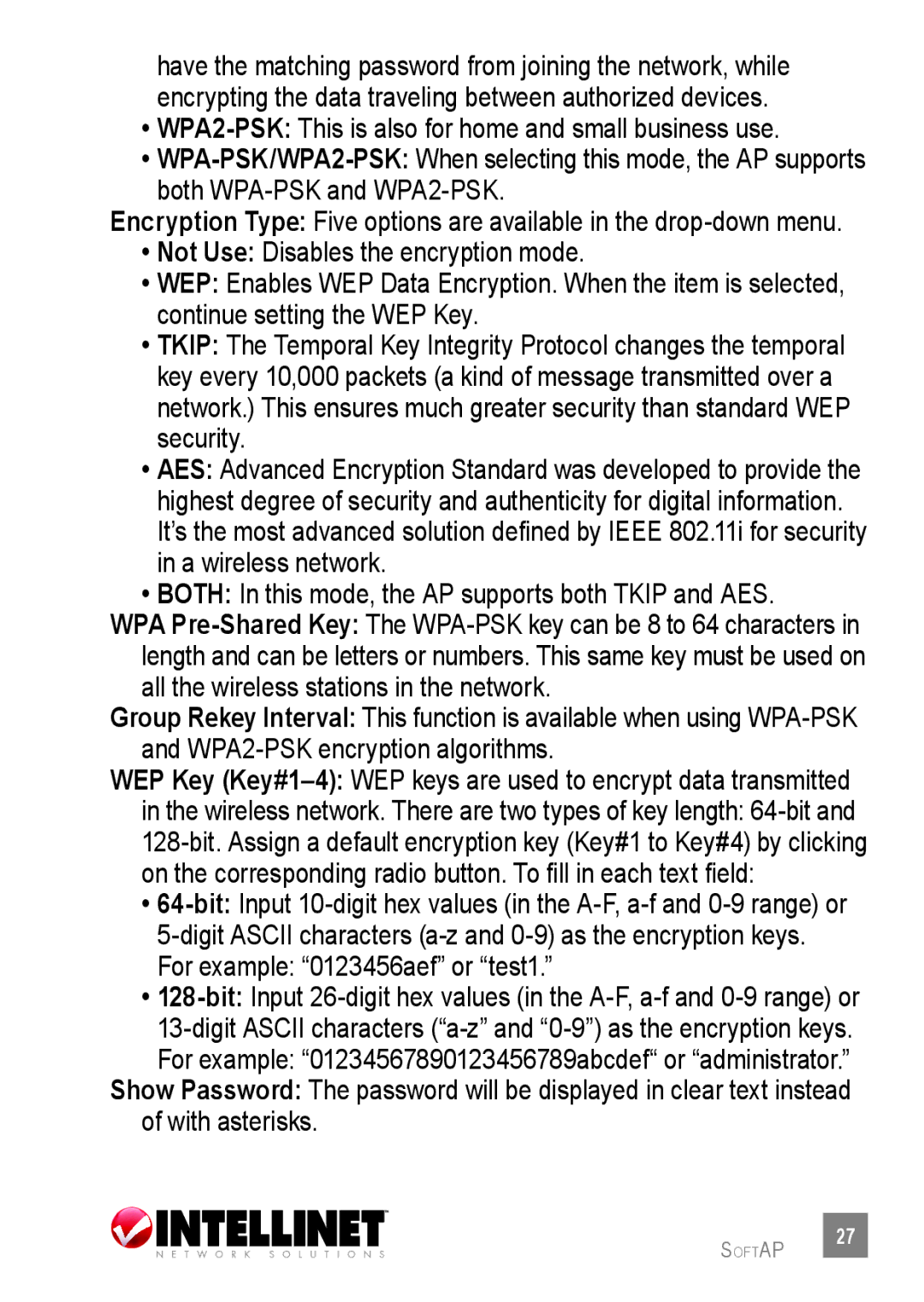have the matching password from joining the network, while encrypting the data traveling between authorized devices.
•WPA2-PSK:This is also for home and small business use.
•WPA-PSK/WPA2-PSK:When selecting this mode, the AP supports both WPA-PSK and WPA2-PSK.
Encryption Type: Five options are available in the drop-down menu.
•Not Use: Disables the encryption mode.
•WEP: Enables WEP Data Encryption. When the item is selected, continue setting the WEP Key.
•TKIP: The Temporal Key Integrity Protocol changes the temporal key every 10,000 packets (a kind of message transmitted over a network.) This ensures much greater security than standard WEP security.
•AES: Advanced Encryption Standard was developed to provide the highest degree of security and authenticity for digital information.
It’s the most advanced solution defined by IEEE 802.11i for security in a wireless network.
•BOTH: In this mode, the AP supports both TKIP and AES.
WPA Pre-Shared Key: The WPA-PSK key can be 8 to 64 characters in length and can be letters or numbers. This same key must be used on all the wireless stations in the network.
Group Rekey Interval: This function is available when using WPA-PSK and WPA2-PSK encryption algorithms.
WEP Key (Key#1–4):WEP keys are used to encrypt data transmitted in the wireless network. There are two types of key length: 64-bit and 128-bit. Assign a default encryption key (Key#1 to Key#4) by clicking on the corresponding radio button. To fill in each text field:
•64-bit:Input 10-digit hex values (in the A-F, a-f and 0-9 range) or 5-digit ASCII characters (a-z and 0-9) as the encryption keys. For example: “0123456aef” or “test1.”
•128-bit:Input 26-digit hex values (in the A-F, a-f and 0-9 range) or 13-digit ASCII characters (“a-z” and “0-9”) as the encryption keys. For example: “01234567890123456789abcdef“ or “administrator.”
Show Password: The password will be displayed in clear text instead of with asterisks.
